Text


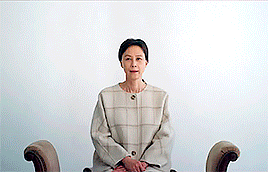

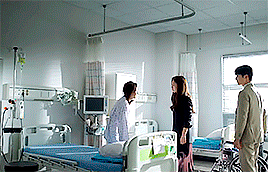
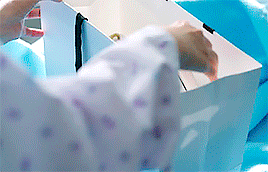
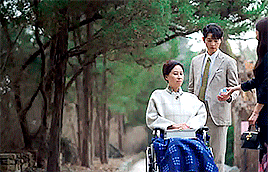

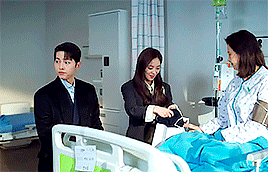
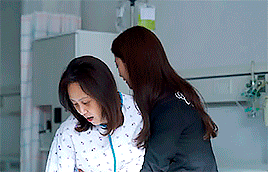
hong cha young being the best daughter-in-law in the world ♥
56 notes
·
View notes
Text
I did this back then! I just fixed it alittle ^_^ ! though i gave up on its quality.
⠀
I wanted to make alittle edit of how i imagined Jang joon-woo & Hong chayoung meeting! I imagine joon-woo wearing glasses back in his first wusang days lolol
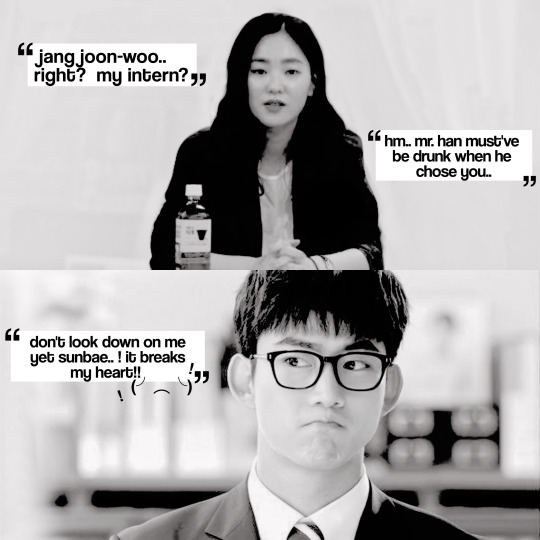
#hong cha young#vincenzo#vincenzo cassano#jang han seo#jang han seok#jang joon woo#juncha#cha young x han seok#chaseok
27 notes
·
View notes
Text
Totally not planning to make my own ideas and hcs, wink wink..
Can i just come clean and say, i absolutely LOVE chayoung & hanseok's relationship even as enemies? wished the directors did more of them in the drama though or atleast content! I'm VERY curious about how their paths crossed from the start.
28 notes
·
View notes
Text
Can i just come clean and say, i absolutely LOVE chayoung & hanseok's relationship even as enemies? wished the directors did more of them in the drama though or atleast content! I'm VERY curious about how their paths crossed from the start.
#vincenzo cassano#vincenzo#hong cha young#chayoung#jang han seo#jang han seok#jang joon woo#their dynamic omg#chemistry#headcanons
28 notes
·
View notes
Text
The Power of Framing: Love Language Through Film Lanuage
Observations of Camera Work, Film Language, and Character Dynamics (Cha Young & Vincenzo + Jun Woo) Through the Lens
I’d just like to note that this little rant was inspired by the tags of @zerogravitykitty ’s reblog of a previous post of mine
I think it’s interesting how Cha Young and Jun Woo are rarely, if ever, framed within the camera on an even level, side by side.
It’s only the first episode when Jun Woo mutters to himself as Cha Young runs to her car, “She always leaves me behind.” This sets up their dynamic both in cinematography and in character progression throughout the rest of the show; he watches her leave with Vincenzo after eating spicy noodles while he calls after her, and by episode 12, Cha Young brushes past him after slapping him twice while he proclaims his innocence to her (in vain, because he’s guilty as fuck).
I think it’s both meaningful and funny that he tries to uphold the facade even after being exposed, indicating the extent to which his faux-identity was tied to his relationship with Cha Young. After she says, essentially, “you’re a murderer and a liar. That is very cringe,” he immediately changes his hairstyle and reveals himself as the real chairman. Him saying “don’t say it like that” was so funny to me, because he did kill innocent people? And lie to her? That’s exactly what he did lmao? Men refuse to pull out but they really be pulling out the excuses when they want to, huh
The only real, notable scene when Cha Young and Jun Woo are side by side, shoulder to shoulder, is the bridge scene in episode 2 (one of my favorite scenes), and even then, the majority of the sequences are angled from the perspective of either of the characters, looking sideways. Although they are two people standing together, the camera intentionally cuts them up so visually they are not perceived as a unit.
Another example [ credit to @toobadforthefacts where it’s due ] of this is when they are in the car together, driving to the underpass to Vincenzo. While Cha Young doesn’t yet know that Jun Woo is the real villain, we the viewer do, and curiously, we never get a lingering, prolonged straight across shot through the windshield showing the two side by side, which is especially noticeable because she’s riding shotgun, and it’s a common and easy camera angle; wide shots show a full picture, and it’s very easy to portray two people sitting in a car in such a way. Instead, they make the executive choice to show her crying on the phone while Jun Woo looks sideways at her, angled slightly downwards, further communicating their difference in size and height (he’s already much taller than her, but this is intentionally pronounced). This not only prolongs tension but helps communicate that these two are not real allies, and we cannot trust him. Now that we know of his true colors, it could be assumed that the camera angles were trying to warn us all along, even in the beginning.
We get plenty of moments with Vincenzo and Cha Young side by side, however, framed within the camera on even ground, a flat image. This is best seen by: them waiting on the courtroom steps, emerging in a symmetrical shot from Vincenzo’s car, across jail bars, positioned to flick each other’s forehead, walking up steps, presenting to clients, down different hallways, fighting through a crowd of reporters, etc. and clearly visualizes them on even ground, on the same page. When Vincenzo and Cha Young are pictured standing together, whether it is inside a crowd or they are the only ones in frame, they are always intentionally grouped together, by color, proximity, or camera positioning, or all three.
Ahem. It’s called, being partners.
In contrast, Cha Young and Jun Woo do not have the same partnership, and in very few contexts are they equals (lawyer to intern, lawyer to chairman, etc.). In episode 11, for example, when they run together to his car to find Vincenzo, he even reaches out to grab her arm, and yet they still don’t quite manage to run in sync.
The way that they are shot together in their scenes is significant because if she was in a similar position with someone she considered to be a romantic option, they would be framed differently, and small moments - from him noticing her bracelet, begging her to stay, etc. - would be emphasized. However, the shots that are emphasized include the camera lingering on his expression as he watches her moving out of her house, as he laughs at her antics, and as he watches her walk away. The tragedy of the unrequited second lead. Just kidding, I love him but he deserves it
Jun Woo is shown, particularly in the beginning, in close vicinity to Cha Young, almost as a shadow, behind her back. In a lot of ways, this intentional framing can be seen as a good thing, at least in film language; a loyal lieutenant, a right hand, a constant companion, someone trustworthy literally watching her back, etc. which is what Jun Woo-the-intern is.
He even offers to “be [her] spy...like James Bond...” after she has made it clear that she is intent on leaving.
However, he has ulterior motives for this; his faux persona wants to help her, and to stay in contact with her. The chairman wants to stay in contact with her, but also keep an eye on a rival lawyer’s whereabouts and help control the spread of intel. Jun Woo-the-chairman, the true persona, becomes a looming figure, the betrayer, “the [strike] that comes from behind”.
What’s also interesting is that Jun Woo seems to be aware of this, too. When he jokingly urges Cha Young in episode 3 to “let me quit my internship...be your partner”, he’s using lawyer jargon but also referring to the double meaning, a partner, an equal, which is subtext that we the viewer also catch onto, and is followed by him jokingly (?) asking Cha Young out on a date - most likely he is expecting her to say no, but is feeling the waters, so to speak, and judging her response from a safe distance. Jun Woo-the-chairman isn’t shooting his shot, not yet, but is evaluating what will be needed to cover the cost of her disinterest.
Most likely, he wants to play the long game and maintain his charade as long as possible until he proves himself invaluable to her in some way and he can coax her into seeing him in a romantic or sexual light, after which he’ll have to break the news, but this is something he wants to prolong as long as he can, which we see happen as he protests her even though she knows, and he knows, that the game is up. His facade is something he does for fun, and to indulge his god-complex, but he’s created an interpersonal relationship with Cha Young that has penetrated the artificial shell of Jun Woo-the-intern and somehow made contact with Jun Woo-the-chairman, the real identity.
In other words, like a true businessman, he got invested.
In order to save this investment, Jun Woo is even willing to place himself beneath her. When Jun Woo-the-intern begs Cha Young not to leave Wusang in episode 4, he gets on his actual knees and makes a praying gesture with his hands, which she holds between her own for a few seconds. Had this scene been taking place between Cha Young and Vincenzo, they would’ve taken advantage of this moment to shoot the shot from the side, to illustrate their difference in height, made sure that the viewer notices the contact of his hands clasped (connected hands is a shorthand for intimacy; intertwined fingers, for example, show romantic connection) in between hers, and they would’ve held it for effect (note the shot of Cha Young and Vincenzo at the underpass, framed together underneath one arch while the camera panned to Jun Woo, standing under his own arch, isolated, an outsider looking in).
Another likely intentional parallel is Jun Woo and Vincenzo handing Cha Young her purse; when Cha Young rushes to the building to attempt to stop it from being torn down, Jun Woo says something like, “wait...your purse!” (reminiscent of the way he often reminds her of where she parked her car) and tosses it to her, from behind. When Cha Young bangs on a drum to call the crowed room to order, Vincenzo holds her purse for her. He is right next to her, as opposed to behind or in front, and hands it back to her from a shorter distance.
To expand on something I previously wrote: At first, I noted the peculiar positioning of the graveyard scene, in which Jun Woo accompanies Cha Young to her father’s grave (the grave of a man he ordered to be killed). When he first comes into frame, he approaches and then settles behind her. After we the viewer see him lower himself to crouch next to her, we get a wide shot where we see the top of her head; she is presumably still staring at the base of the gravestone. We do get a profile shot of Jun Woo, however, and rather than facing the grave side by side, he is positioned to be facing her side instead, eyes on Cha Young.
“Wide shots in film are generally meant to be less intimate, to paint the broader picture so we understand positioning and landscape in a more objective shot than a close up of someone’s face or hands. However, that doesn’t mean that a wide shot cannot also be character focused.”
Based on the positioning of the frame, we see that Cha Young’s priority is her father, and his cause (which she undertakes herself). Jun Woo’s priority is the collective power dynamic he wields over the people he fools, his disregard for the horror of his actions (the dead man he doesn’t spare a glance for), and Cha Young herself. They cannot be framed on an equal ground because they do not want the same things, and are not synchronized in the way that Cha Young and Vincenzo are.
In other words, Jun Woo is fighting to leave the background and enter the foreground, both in film language and the language of the narrative. While he succeeds in the narrative, having been revealed as the show’s real villain, he is still designated to the second male lead. Each time he asks Cha Young to let him stand next to her, without really asking, she rejects him without having to even say it.
229 notes
·
View notes
Text
Is the vincenzo fandom still alive... PLEASE
114 notes
·
View notes